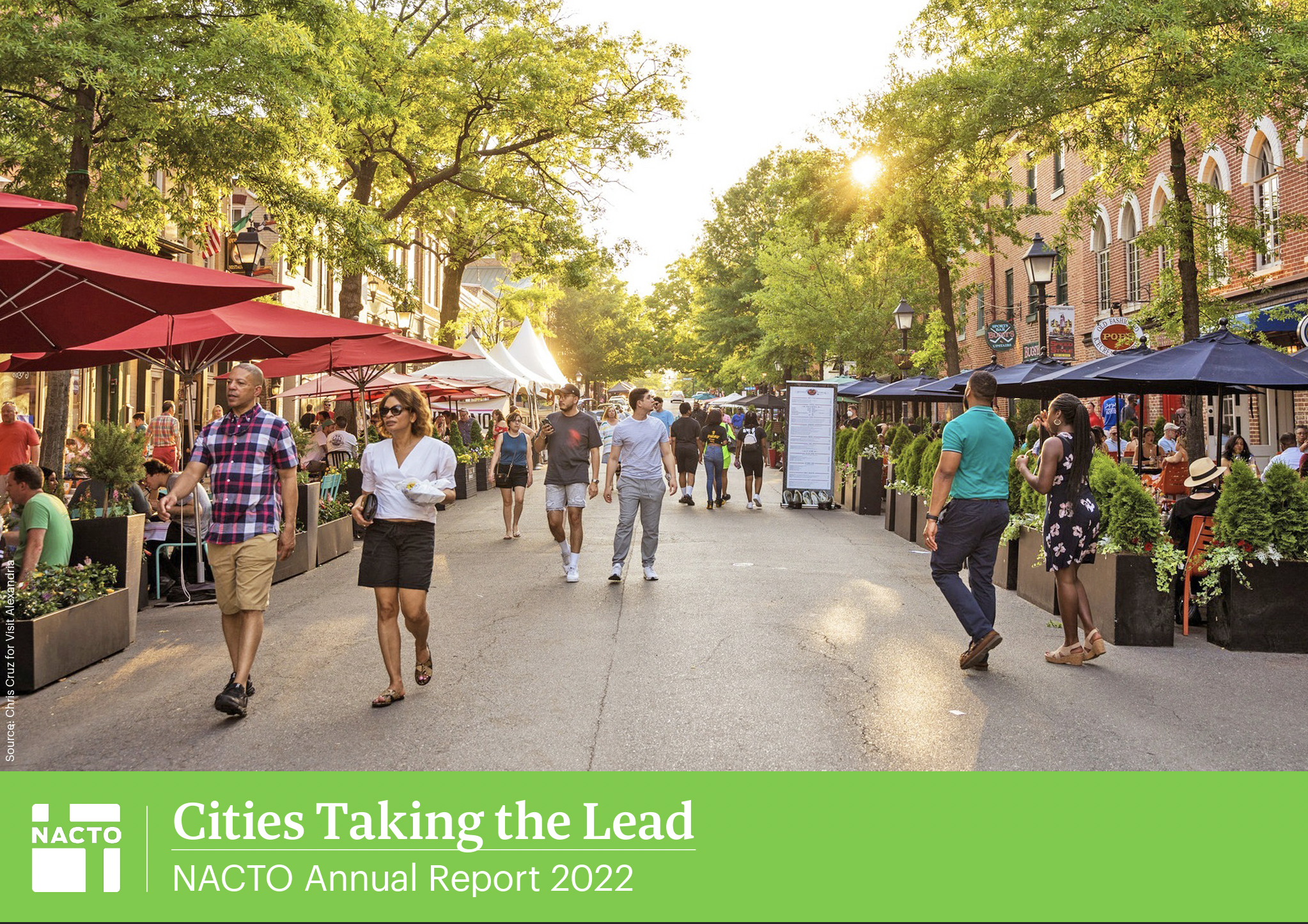
Read NACTO’s 2022 Annual Report (pdf).
Throughout the past year, cities grappled with a litany of challenges old and new, including a 16-year-high in U.S. traffic fatalities, economic inflation, the continued disruption wrought by the pandemic, and the ever-present crises of climate change and racial injustice.
Nevertheless, 2022 also proved to be a year filled with creativity, resilience, and hope, both throughout NACTO’s network of nearly 100 cities across North America and within NACTO itself. That perseverance and determination are reflected in our 2022 Annual Report.
While the first two years of the pandemic were largely defined by quick, improvised responses to immediate crises, in 2022, we laid the groundwork for longer-term, transformative changes to our streets. From Boston to San Francisco, cities took programs piloting car-free streets, bus lanes and bike infrastructure and made them exciting permanent parts of the urban landscape. Our work at NACTO also turned toward this new future.
Above all, 2022 reinforced the vital role NACTO plays as a convener, leader, and forward-thinking voice in the movement for safer, more equitable, and more resilient cities. Like a multimodal transportation system, NACTO’s network connects thinkers and doers across geography and expertise, inspiring them to adapt and thrive, to find new solutions, and to envision a better world.
The year ahead will require us to practice transformative new ways of thinking, working and being. Even as our cities develop better tools to manage the pandemic, we continue to face other intertwined crises: the traffic safety crisis, the climate crisis, an economy that increasingly leaves people behind, and enduring racial inequities in our communities.
Though the path ahead holds challenges for those of us committed to charting a more equitable, sustainable future, these challenges are not insurmountable, and they require all of us to commit our creativity and perseverance. At NACTO, we’ve already rolled up our sleeves and are ready for the work ahead.
Read the 2022 Annual Report (pdf) >

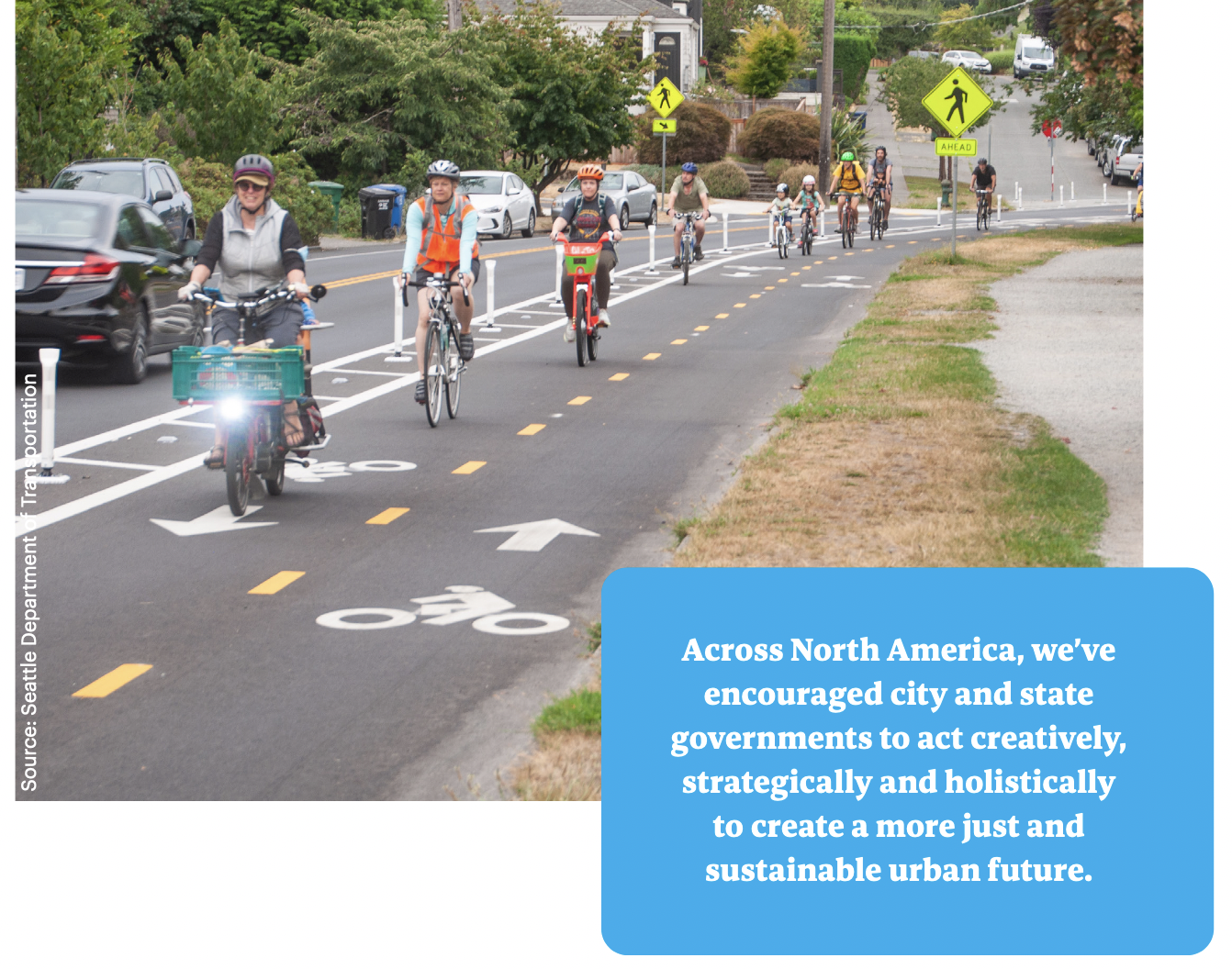
NACTO cemented our role as a vital and respected voice on transportation policy issues, simultaneously building on past successes and opening up new fronts in the fight for more sustainable, equitable cities.
We worked hard to maximize the benefits of the federal Infrastructure Investment and Jobs Act (IIJA) by successfully pushing for new rules that explicitly allow cities to apply NACTO street design guidance to federally-funded projects on city streets. With the guidance of member cities, NACTO compiled comprehensive recommendations for the U.S. Department of Transportation about the new “Safe Streets and Roads for All” initiative, many of which were reflected in the final program. We also celebrated the launch of the “Reconnecting Communities” program, which commits $1 billion to reconnect communities divided by transportation infrastructure and right historical wrongs.
NACTO also fought aggressively to ensure the vehicles on our roads are as safe as possible. In an effort to reform misleading federal vehicle safety standards, we helped generate over 15,000 comments to the National Highway Traffic Safety Administration (NHTSA) in support of updating the New Car Assessment Program to account for the safety of people traveling outside of vehicles for the first time in the program’s history. We also pushed NHTSA to think holistically strategically about safety standards for autonomous vehicles, arguing against ad-hoc exemptions for AVs that make an already murky marketplace less safe and even harder to understand.
Beyond D.C., we grew the movement to reform urban speed limits, kicked into high gear by our City Limits guidance. In 2022, cities from Hoboken to Salt Lake City to Lake Forest Park, WA, lowered speed limits and adopted NACTO’s guidance to set speeds using a Safe Systems approach designed to reduce traffic fatalities and injuries. These municipalities join a growing list of places—ranging from New York to Fayetteville, AK—that have taken action to lower speed limits and save lives on their streets.

Through our research and reports, NACTO developed and shared groundbreaking guidance and established best practices that enable cities to re-envision and reshape their streets.
In 2011, cities banded together to create a first-of-its kind document: bikeway design guidance developed by cities, for cities. The NACTO Urban Bikeway Design Guide sparked a design revolution, where city ingenuity and values were elevated in service of safe and vibrant streets and transportation networks.
This year, NACTO began the process of developing and publishing the next iteration of bike design guidance for cities, by cities. The first part of this process involves writing seven working papers that explore some of the most critical gaps in vetted guidance for cities. This work will feed into an even larger resource: the first new edition of the Urban Bikeway Design Guide since 2014. We’ve published three of those papers so far:
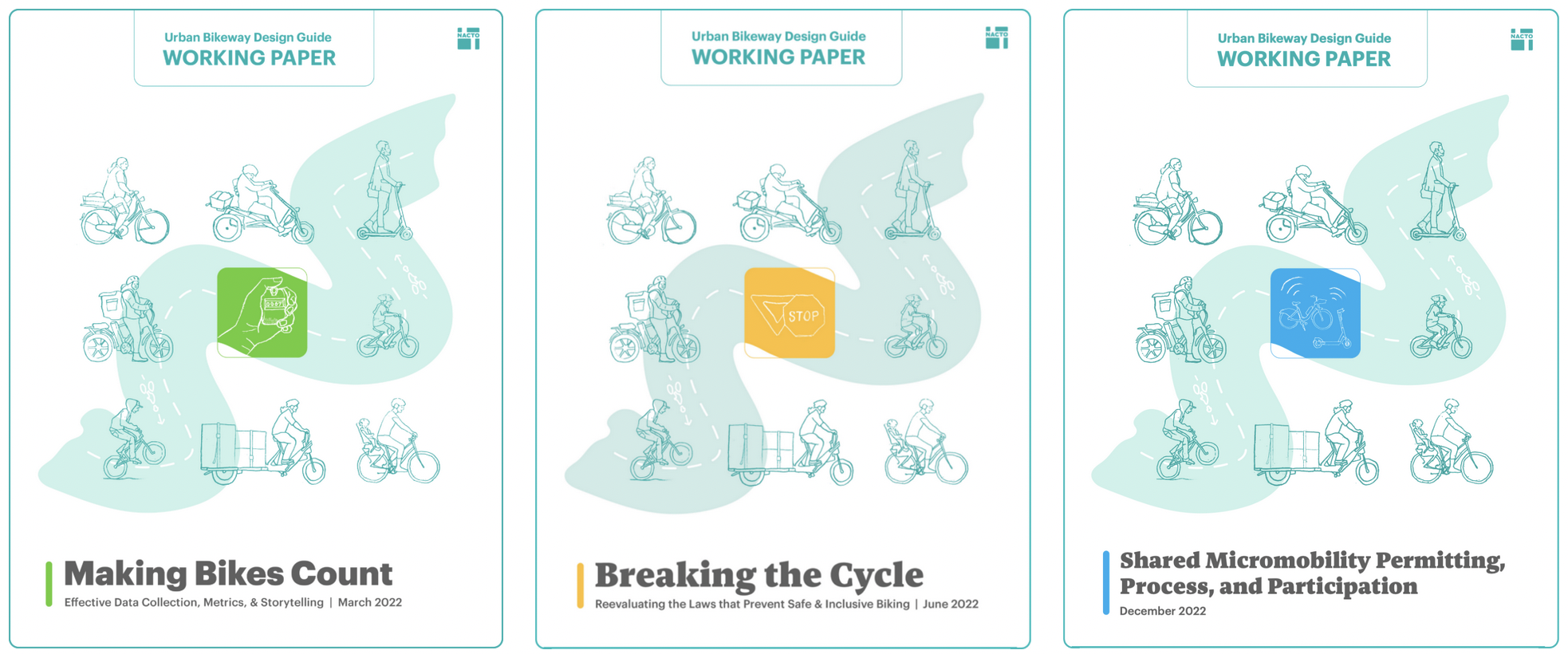
In August, NACTO published Move! That! Bus! Tactics for Transforming Transit in Two Years, a report designed to provide decision makers a clear action plan to quickly curb greenhouse gas emissions and incentivize more people to ride transit. Inspired by research from the United Nations that shows leaders have less than three years to avert the worst effects of climate change, and supported by funding from the American Cities Climate Challenge, the local city bus emerged as the key focus because of its efficiency, ubiquity, and the flexibility; a single bus can carry up to eight times more people than a personal car, reducing emissions by as much as 82% per trip.
In conjunction with the report, NACTO curated a virtual transit discussion series, convening practitioners, policymakers, advocates, and riders to dig deep into specific strategies for transforming transit. Over 500 practitioners, advocates, and policymakers attended the three-part series.
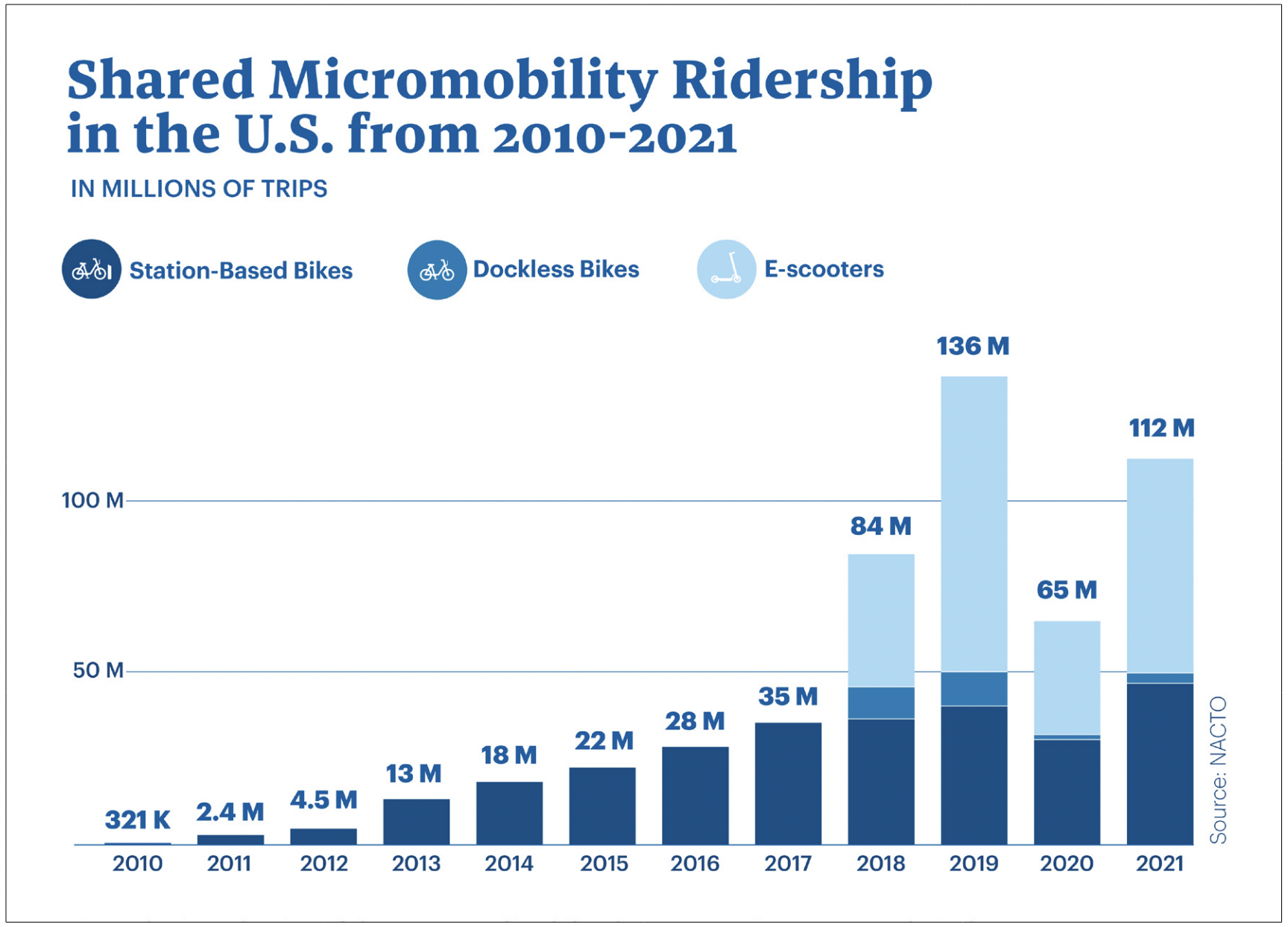
In 2022, NACTO also published a new Shared Micromobility Report, which dove deep into the data from micromobility systems across the U.S. to identify the significant changes that have occurred since 2020, and the trends that are likely to continue into 2022 and beyond.
Our research found that Americans have taken over half a billion trips on micromobility systems since 2010, and that shared bikes and e-scooters were crucial for keeping essential workers moving during the pandemic. The snapshot uncovered other important insights too, like the fact that ridership has shifted away from the AM rush hour towards increased trips throughout the day, and that shared e-bike trips nearly doubled from 9.5 million in 2018 to 17 million in 2021.
The snapshot wasn’t created in a vacuum: many of its observations and insights were informed by a weeklong virtual “Micromobility Summer Camp” hosted by NACTO and the Better Bike Share Partnership in June to tease out trends, strategies and best practices in the world of shared micromobility.

In 2022, NACTO worked closely with member cities and staff to develop their individual and institutional capacity to make change.
NACTO and the Better Bike Share Partnership launched the Transportation Justice Fellowship, a program designed to amplify the work of professionals who identify as people of color and who embed mobility justice in transportation agencies and beyond. Now in its second year, the program offers twelve fellows an eight month curriculum designed to develop their individual and institutional capacities to create a more just and equitable mobility field.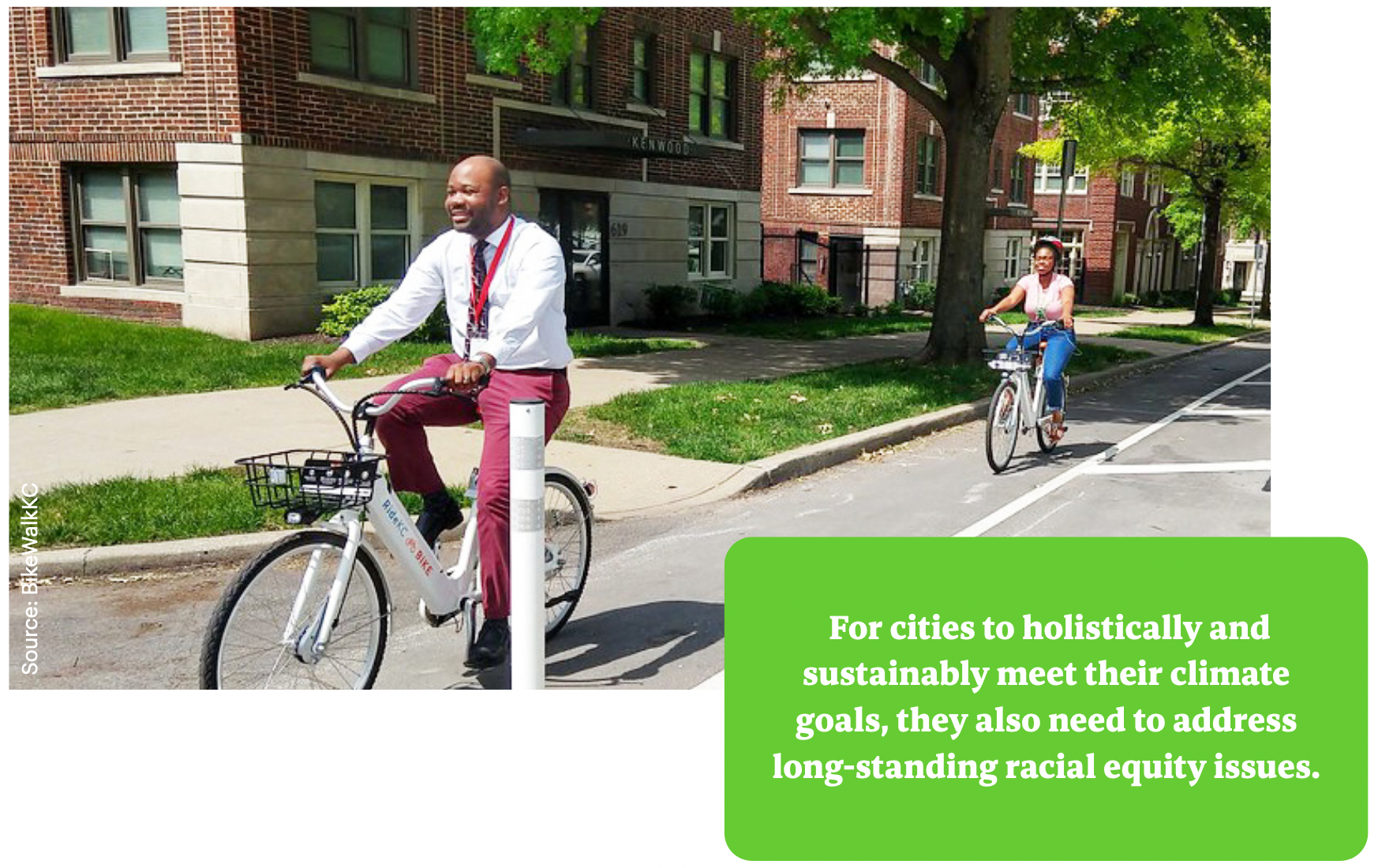
At the agency level, NACTO’s “Projects to Programs” initiative helped cities make the shift from project-by-project delivery to a programmatic framework for transformative change. Through in-depth workshops and trainings with city staff as well as direct project support, NACTO and our partners at Delivery Associates developed tools cities can use to assess agency conditions, structure work plans and create the conditions for continued success. We also published a detailed report, Structured for Success, that’s designed to serve as a starting place for transportation-minded decision-makers and advisors who want to improve project delivery in their cities.
NACTO members depend on our guidance to help them embed equity at the core of their work. We recognize that, for cities to holistically and sustainably meet their climate goals, they also need to address long-standing racial equity issues. With that in mind, NACTO partnered with NRDC and Nelson Nygaard in 2022 to form a transportation-focused “Equity Cohort” that convened cities and nonprofit organizations to study the intersection of transportation justice, climate change and racial equity.
These conversations resulted in the creation of a virtual “Transportation Equity Peer Learning Series,” which focused on the ways city leaders can address the intertwined issues of federal funding and transportation equity,

In 2022, NACTO celebrated the long-awaited return of the Designing Cities conference. For the first time since the pandemic shut down gatherings around the world, NACTO convened city leaders and transportation professionals in Boston, Cambridge, and Somerville for our 10th Designing Cities conference. The event was our biggest gathering to date, with 1,200 transportation experts, policymakers, advocates, and practitioners in attendance.
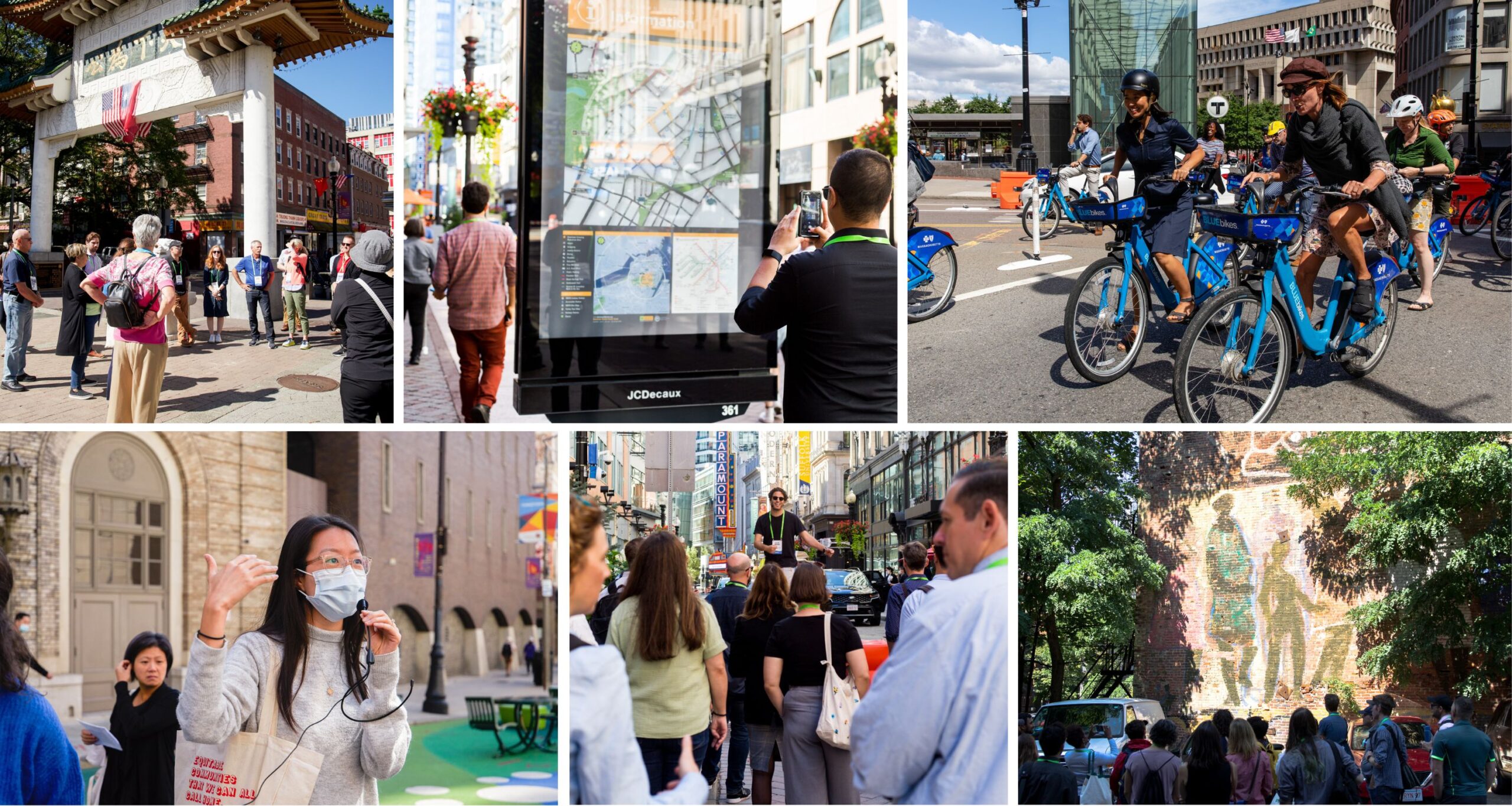
We heard from some of the region’s and country’s highest-profile leaders, including Boston Mayor Michelle Wu, Congresswoman Ayanna Pressley, USDOT Deputy Director Polly Trottenberg, and FHWA Deputy Administrator Stephanie Pollack, who shared their personal histories and their visions for the future of transportation policy. On dozens of WalkShops led by city staffers and local experts, we learned about themes ranging from the social and economic impacts of the Big Dig, the struggle for environmental justice in East Somerville, and the power of regional collaboration.
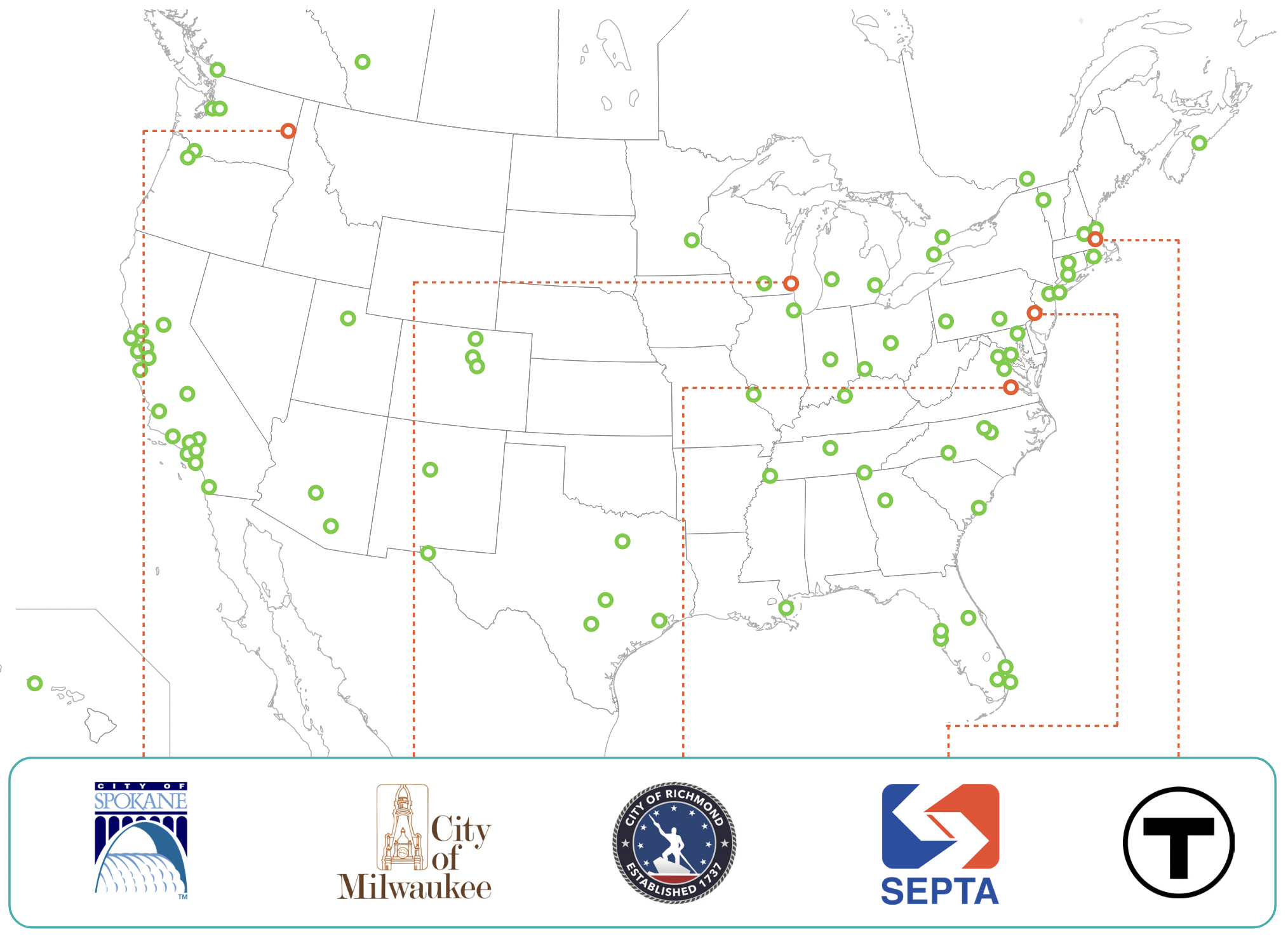
Our movement also continued to grow. In 2022, NACTO five new members: The cities of Richmond, VA; Spokane, WA; and Milwaukee, WI; and two prominent transit agencies, MBTA (serving the Boston region); and SEPTA (serving the Philadelphia region). In the last decade, NACTO has grown from a couple dozen city transportation departments to nearly 100 local governments across North America.
The push for safer, more sustainable and more equitable cities has grown globally, too. In just seven years, the Global Designing Cities Initiative (GDCI) grew from a small startup incubated within NACTO to one of the most influential leaders on city streets around the world. In 2022, GDCI took the next step in its organizational growth and became an independent program. GDCI is now managed under the fiscal home of Rockefeller Philanthropy Advisors—an international thought leader specializing in the support of high-impact global projects and strategic philanthropic initiatives.